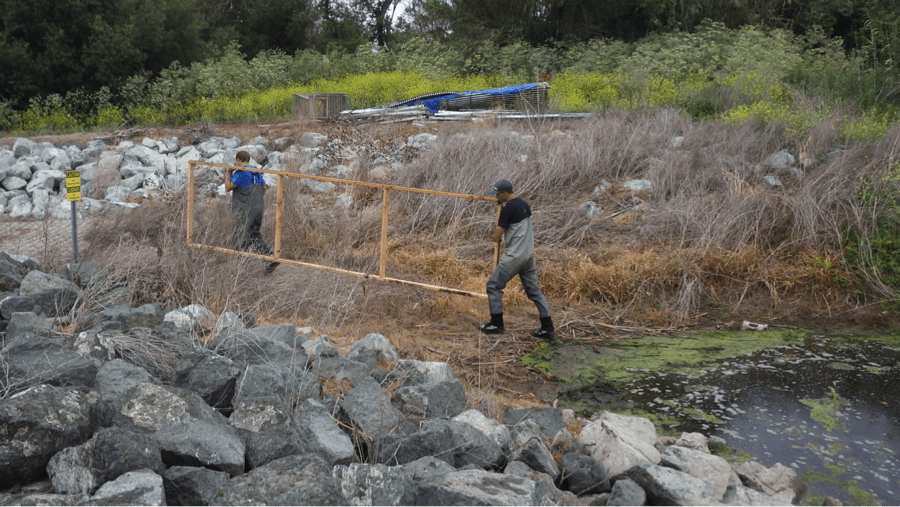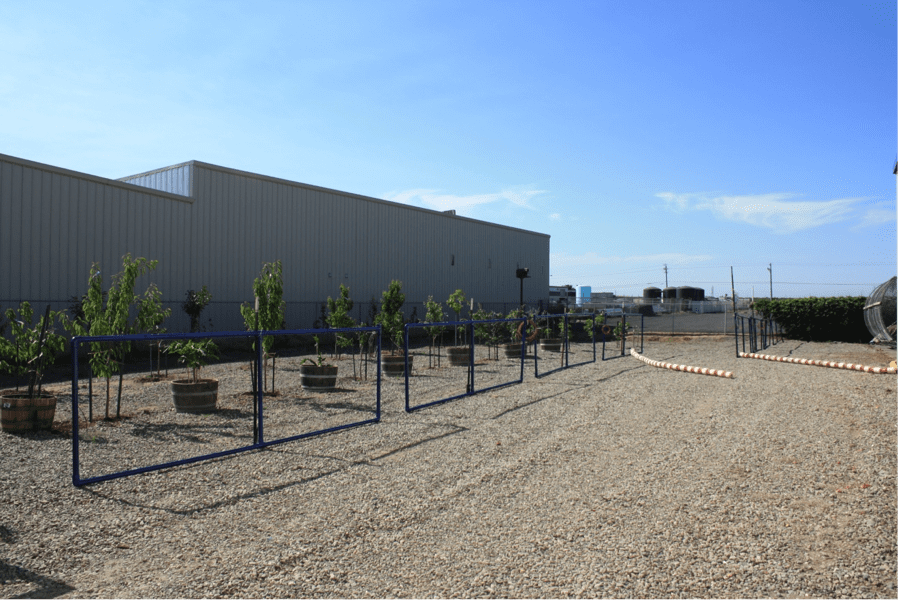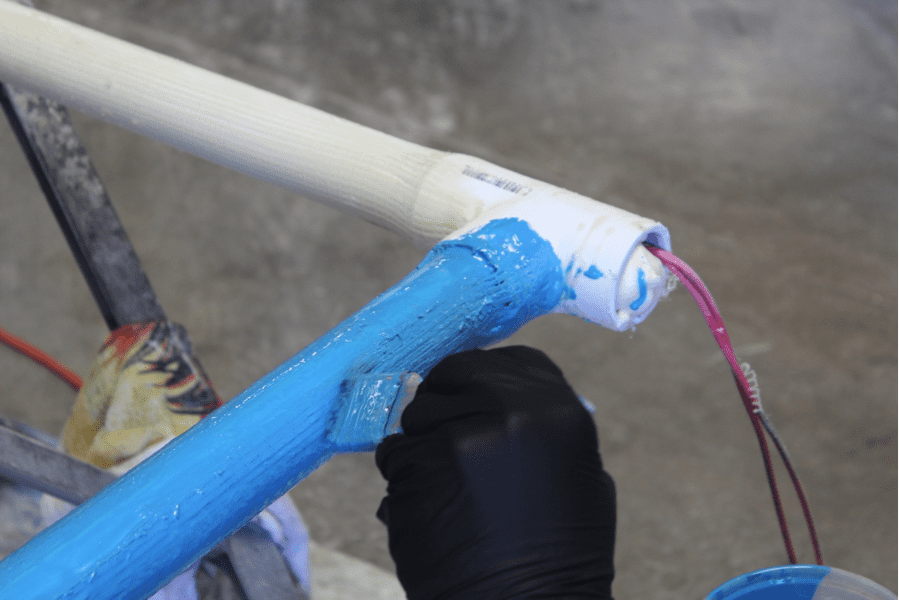Friday November 13, 2015
 When we are juggling multiple projects or working under tight deadlines, our talented fabricators at the FABLAB shift into high gear, often putting in early mornings and late nights to get the job done. During these periods, our shop resembles a small factory, with various staff fabricating, repairing, or designing monitoring equipment. Efficiency is crucial at such times, as exemplified by an assembly line recently used to fabricate eight large PIT tag antennas. The system streamlined the construction process, from installing the antennas’ internal wiring system to applying the final coats of paint. Our team designed these antennas to answer questions about the movement and behavior of steelhead in the Salinas River (see Fish in a dry stream). The antennas were specifically designed to meet the challenging conditions of the monitoring location, including salty water, potentially high flows, and even boat traffic.
When we are juggling multiple projects or working under tight deadlines, our talented fabricators at the FABLAB shift into high gear, often putting in early mornings and late nights to get the job done. During these periods, our shop resembles a small factory, with various staff fabricating, repairing, or designing monitoring equipment. Efficiency is crucial at such times, as exemplified by an assembly line recently used to fabricate eight large PIT tag antennas. The system streamlined the construction process, from installing the antennas’ internal wiring system to applying the final coats of paint. Our team designed these antennas to answer questions about the movement and behavior of steelhead in the Salinas River (see Fish in a dry stream). The antennas were specifically designed to meet the challenging conditions of the monitoring location, including salty water, potentially high flows, and even boat traffic.
 Creating just the right design to suit the challenges of the Salinas River was a multiple step process. Our team collected data during a reconnaissance survey of the chosen installation site, conducted an extensive literature review, and consulted with PIT tag manufacturer Oregon RFID. The installation location is relatively complex, which required advanced planning and a high level of technical skill in antenna design and fabrication. We first fabricated a preliminary model array (shown above) and tested it in the field to determine the detection threshold of the design. Building and testing this preliminary array was crucial for gathering information specific to operating an antenna at the site. Ultimately, it allowed us to create a better design that maximized the antenna’s detection efficiency while covering the width of the lower Salinas River near the estuary.
Creating just the right design to suit the challenges of the Salinas River was a multiple step process. Our team collected data during a reconnaissance survey of the chosen installation site, conducted an extensive literature review, and consulted with PIT tag manufacturer Oregon RFID. The installation location is relatively complex, which required advanced planning and a high level of technical skill in antenna design and fabrication. We first fabricated a preliminary model array (shown above) and tested it in the field to determine the detection threshold of the design. Building and testing this preliminary array was crucial for gathering information specific to operating an antenna at the site. Ultimately, it allowed us to create a better design that maximized the antenna’s detection efficiency while covering the width of the lower Salinas River near the estuary.
 The final array design included eight rectangular half-duplex antennas measuring 15 ft. wide by 4 ft. tall. The antennas are configured side-by-side and can be staggered to provide easy boat passage without sacrificing detection area. Because the site is in brackish water, the design maximizes the power of the antenna to overcome the effects of salinity on its detection ability, since the signal fades faster in salt water than in freshwater. The design can also withstand heavy flows. The wire for the antennas was embedded in polyvinyl chloride (PVC) tube frames and held in place by expanding foam. These frames were subsequently wrapped in fiberglass and painted to camouflage the structure underwater. We are proud of the final result of this fabrication challenge, and look forward to seeing it tested in the field.
The final array design included eight rectangular half-duplex antennas measuring 15 ft. wide by 4 ft. tall. The antennas are configured side-by-side and can be staggered to provide easy boat passage without sacrificing detection area. Because the site is in brackish water, the design maximizes the power of the antenna to overcome the effects of salinity on its detection ability, since the signal fades faster in salt water than in freshwater. The design can also withstand heavy flows. The wire for the antennas was embedded in polyvinyl chloride (PVC) tube frames and held in place by expanding foam. These frames were subsequently wrapped in fiberglass and painted to camouflage the structure underwater. We are proud of the final result of this fabrication challenge, and look forward to seeing it tested in the field.



